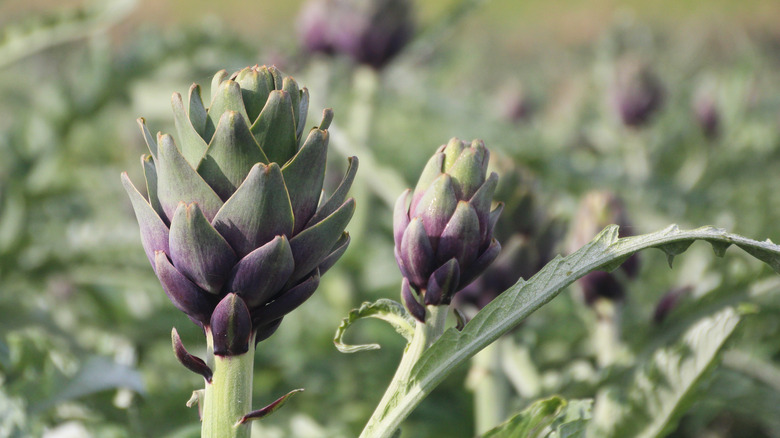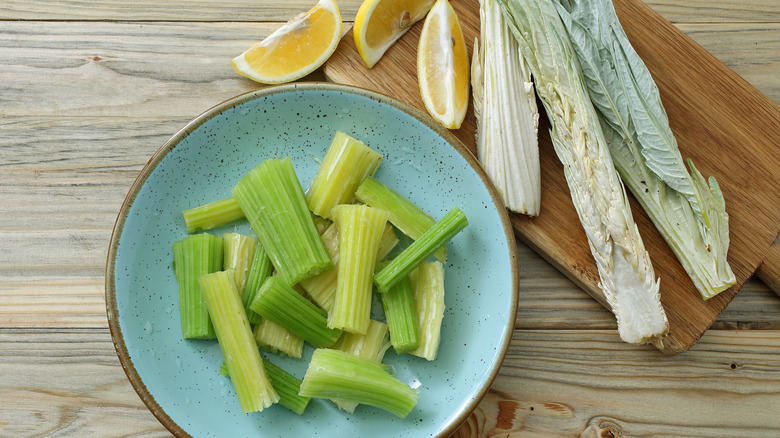The Difference Between Artichokes And Cardoons
Artichokes and cardoons are two vegetables known for their earthy, slightly bitter tastes; tough, tender textures; and unique conical shapes. Their spiky appearance may make them appear intimidating, but they are pleasantly versatile ingredients that enhance the flavor of numerous dishes. It also helps that their names are super fun to say!
Of course, there is a valid reason these plants resemble each other so closely. Artichokes and cardoons — along with daisies, sunflowers, lettuce, and endives — are members of the same family, Asteraceae, according to Encyclopedia Britannica. Moreover, they share the same genus and species as well, Cynara cardunculus. So, how on earth are they distinguishable from one another?
These thistle-like wonders are cut from the same cloth, but there is an important contrast between the two people should know before picking them up at a farmers market or grocery store and using them in recipes. Artichokes' and cardoons' anatomies vary in several ways, especially when it comes to which parts are truly edible.
Very different parts of artichokes and cardoons are eaten
Although they are dear "cousins," artichokes and cardoons are traditionally consumed wildly differently. Smithsonian explains that cardoons' stems are eaten, whereas artichokes' immature flower buds are the part that has been deemed digestible.
The University of Wisconsin-Madison horticulture department shares that cardoons are often grown in gardens for ornamental purposes, as their foliage possesses a silvery tinge and their round, spiny flowers sport an eye-catching purple hue. Cardoons' stems, which look a lot like celery stalks, can be fried, blanched, pickled, sautéed, or enjoyed raw with various sauces and dips.
The buds of artichokes, on the other hand, are delicious in their own way. A mega-popular method of eating artichokes involves grilling, steaming, or baking them with oil and breadcrumbs, removing the petals one by one, then scraping your teeth along their fleshy, buttery, soft interior. Artichoke hearts are also a staple component of spinach artichoke dip, plus soups, salads, pasta, and more.

